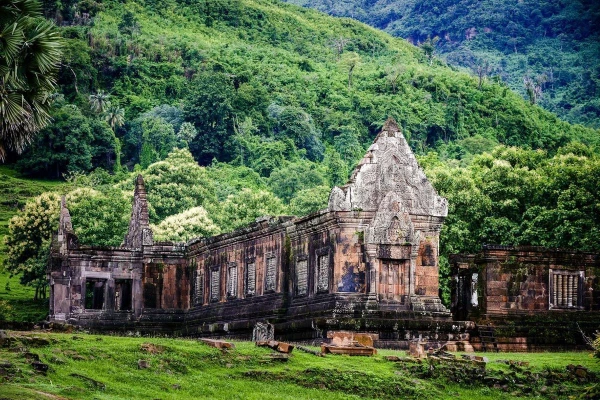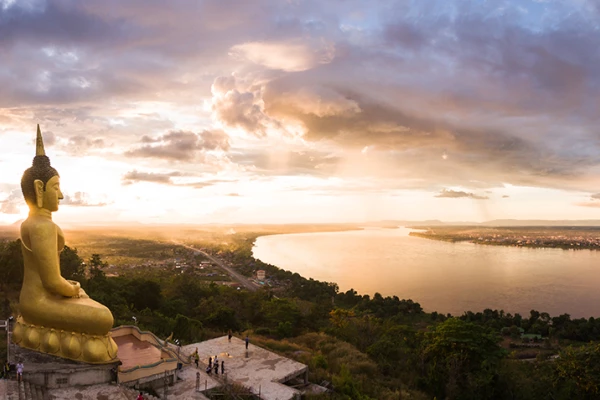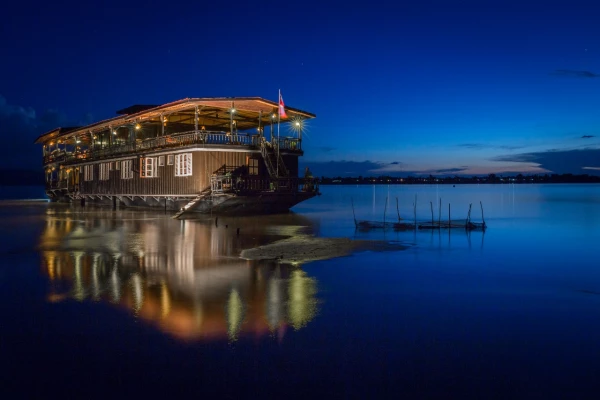Atop Phou Asa Mountain and above Kiet Ngong Village stands an ancient and magnificent stone structure called Vat Phou Asa, which is believed to be a temple. Surrounding it are distinctive and unique columns made of plate-like rocks, which stand proudly as if they were guarding the temple. The summit of Phou Asa opens out to provide a stunning view over large areas of the southern part of Laos.
The forests of Xe Pian and Dong Hua Sao National Protected Areas (NPA) appear to stretch out endlessly from the Kiet Ngong wetland. To the north is the Bolaven Plateau, and on a clear day waterfalls can be seen cascading from it. Ahead to the east is the Xe Kong floodplain in Attapeu, and lining the horizon is the Annamite Mountains on the Vietnamese border. At the top of the outcrop is a ring of stone pillars. Legends abound, but it is uncertain if the structure was built for religious or military reasons.
Phou Asa can be reached by a short walk with a local guide or elephant ride along a forest trail from the village. Elephant-back trips can also be arranged to other places such as nearby forests and wetlands. Village guides are available to take visitors on half or full-day walks to Phou Asa and its surroundings, and can help interpret the many medicinal plants and non-timber forest products you can see along the way. The 7km long eco-trail begin at the foot of Phou Asa and offers 3 to 4 hours of steady walking through tall semi-evergreen forest.
There is also an extensive wetland near Kiet Ngong village, which is good for bird-watching and day hikes. During the dry season, there is a trail around the wetland to Don Lai Island, which takes about two hours if walked slowly. Many waterbirds can be seen, so bring a pair of binoculars. On the way, you will pass the Giant Rock (Hin Huoa Yak in Lao), a sacred place with a superb view. The trail continues to Phapho Village, but you will probably want to return the way you came. Donlai Island can also be reached by canoe. Your boatman will take you slowly around the edge of the wetland, where a passage through the thick mats of floating vegetation is kept open by boats and water buffaloes. A canoe trip is recommended, as it offers a closer look at the birds and local fishing techniques than a walk around the wetland.
There are generally three choices for accommodation in Kiet Ngong: (i) Sleeping huts operated by the village, which sleep two and overlook the wetland; (ii) Home-stay with local families; and (iii) the King Fisher Eco-lodge, located just 1km outside the village, which offers luxury bungalows overlooking the wet- land.








